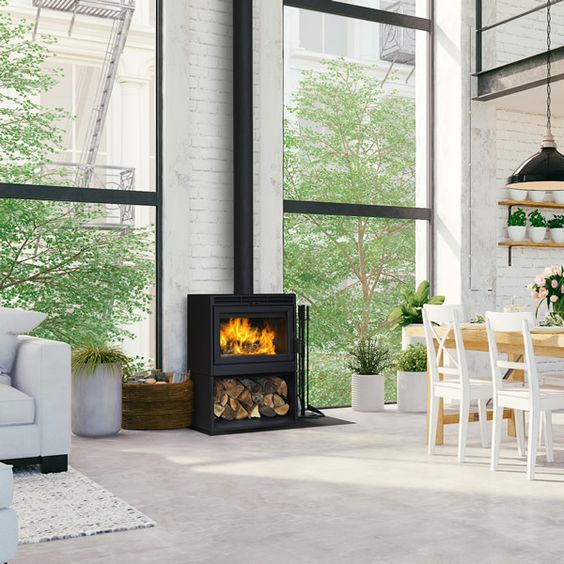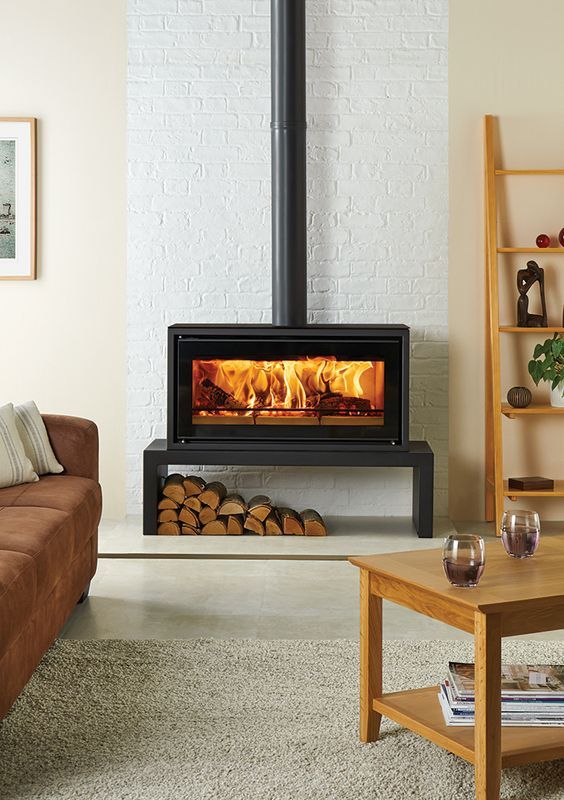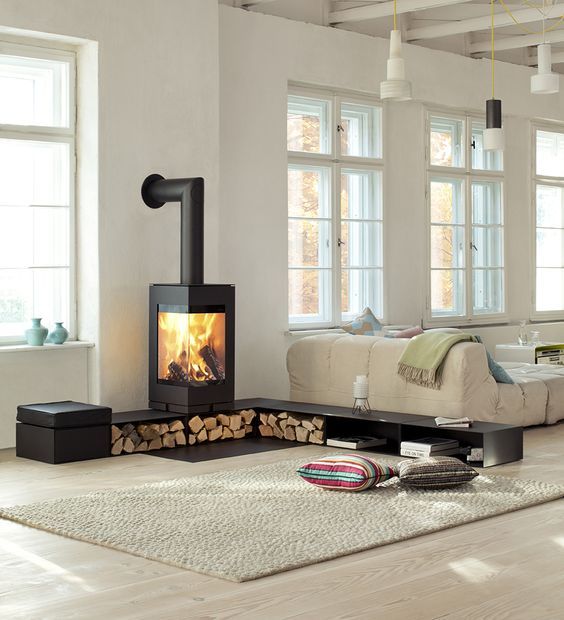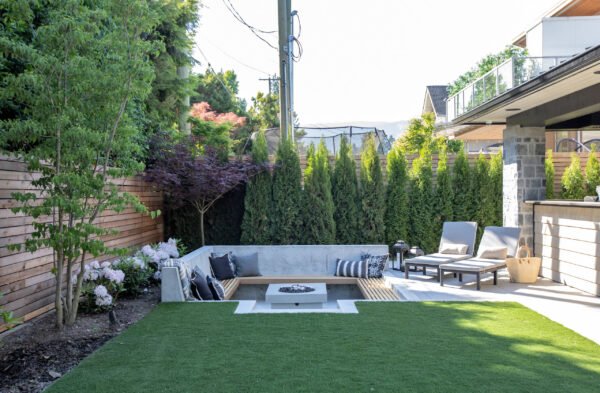
What are the Pros and Cons of Getting a Woodburning Stove?

Nothing comes close to the simple pleasures of curling up with a good book, or a nice glass of wine, by a real fire. For many Brits, home is where the hearth is. Of course, there’s nothing new about having a fireplace to create a cosy, convivial atmosphere at home, but what about getting a log burning stove instead? These compact little heaters have seen a massive rise in popularity over the years as a more efficient way to get your cosy vibes. So, should you get one?
How does a wood burning stove work?
A log burner works by creating a controlled environment in which logs can be burnt more efficiently to produce heat. The stove has an enclosed compartment surrounded by fireproof materials, with air vents to adjust the airflow to the fire and therefore the heat output. Advanced convection systems are also available; these use a continuous airflow to maintain added heating efficiency.
The appliance can usually be fitted into a chimney breast, using the existing chimney as a flue but freestanding models will require a twin-wall stainless steel flue system. Consult an experienced stove fitter who will guide you through design and installation options that comply with the latest Building Regulations for woodburning and multifuel stoves. You may also consider getting the services of a residential chimney cap installation expert to protect your home from rain, snow, and birds.
Wood burning stoves tend to have flat fuel beds and no ashpan, which allows for effective wood combustion on a bed of ash. Multifuel stoves have a riddling grate through which ash and cinders are collected in an ashpan, which creates optimum conditions for the efficient combustion of smokeless fuels, anthracite and peat/turf briquettes.
For a Wood Burning Stove Installation, logs must be as dry as possible, ideally containing less than 20% moisture. Find a supplier of well seasoned hardwood logs, or purchase green wood and dry it yourself at home. For the latter option, you need space to store your logs which need to be seasoned for at least 2 years. You can also buy briquettes or ‘heat logs’ made from compacted sawdust.
What are the benefits of a wood burning stove?

If you are considering getting a woodburner for your home, aesthetics may play a large part. For sure, a stove can add the wow factor to any room, creating a focal point around which to design your interiors scheme. For some, a statement feature like this may be justification enough, while others may need more convincing. Let’s take a look at some tangible benefits that a stove can bring.
Eco-friendly heating
Log burners not only enhance the aesthetic appeal of your home but are also efficient in heating your living space and potentially your water supply. They offer a higher heat output compared to traditional fireplaces and are more environmentally friendly, emitting less smoke. When considering the impact on your carbon footprint, it’s noteworthy to compare the emissions from conventional energy sources. Fossil fuel-derived gas typically emits 0.198 kg of CO2 per kWh, and electricity emits about 517 kg of CO2 per kWh. In contrast, an eco-friendly wood burner has a significantly lower emission rate, at just 0.008 kg of CO2 per kWh.
In addition to their environmental and heating benefits, it’s important to regularly maintain your log burner and keep up with necessary repairs. Regular maintenance not only ensures efficient operation but also extends the lifespan of the unit. This includes routine cleaning of the burner, inspection of the flue and ventilation system, and timely repair of any wear or damage. By keeping your log burner in top condition, you can enjoy its benefits more sustainably and safely.
Make sure you only ever burn seasoned or kiln-dried wood that has a moisture content of no more than 20%. ‘Wet wood’ has been linked to high levels of fine particulate matter air pollution and its sale is being banned.
Lower heating bills
Using a wood burner to heat your home can save you money in the long term, shaving off up to 85% off your heating bill according to some suppliers. Of course, the extent of the savings depends on how much you use your wood burning stove, whether you use it instead of or in addition to central heating, and whether your home is too big to heat from a single wood burner.
In a recent Which? survey, nearly two thirds of respondents declared that they were saving money on their household bills by using a wood burning stove alongside their central heating system.
Increased wellbeing
The sense of greater wellbeing that you feel with a log burner in your home is hard to quantify – but it is there for sure. There is plenty of scientific evidence to show that blue light – such as that emitted by electronic devices – is good for productivity but not for our downtime.
By contrast, the orange glow from a fireplace or stove helps to create a sense of calm, which means your wood burning stove can directly contribute to stress reduction and help you get a good night’s sleep.
What are the downsides of wood burning stoves?
No-one is really arguing that log burners are not a lifestyle enhancing addition to your home. If you love the look and feel of a stove, the above benefits will be more than enough to convince you to get one installed.

That said, you may be held back by the financial outlay required. The price of woodburners varies widely, depending on the make and model you choose. At the budget end, prices start from around £400 but you can pay as much as £5,000 or more for a top-of-the-range model. If you live in a smoke controlled area, you will have to get a Defra approved stove.
Added to that will be installation costs. Depending on the desired location of the stove in your home, installation can be complex in order to meet all regulations. Expect to pay somewhere in the region of £700-£1000 on average for installation. Inset models will need more structural work than a freestanding stove. The most expensive part of the work concerns the flue. Even with an existing chimney, the flue may have to be lined, which can easily add £100+ to the cost of fitting your stove. You may also need to hire an expert in chimney inspections to ensure that your chimney is in perfect condition.















































